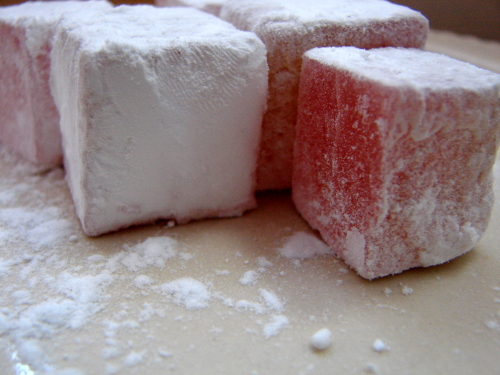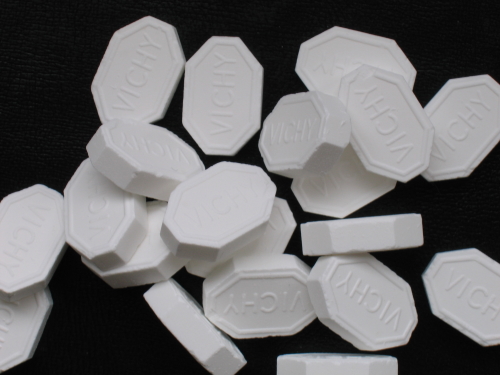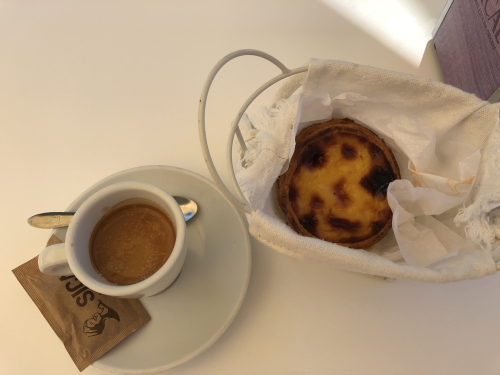Blog Connections
Invention of sweets and pastries
“Invention of sweets” already is an older connection, it has id number 420 out of 1525. Lately, a few additional suggestions for connected sites were made on the Forum, but at first, I found them hard to fit in. It became a good excuse for a clean-up of the connection!

Limits of the connection
One of the issues with the original connection was that even the title was misleading. “Sweets” are what the Americans call Candy (the people Down Under even call them Lollies apparently!). But we have included sweet pastries as well. So I’ve now changed the title of the connection to “Invention of sweets and pastries”. Just anything sweet to snack on while you are visiting a WHS.
The connection did not have an introduction text, and therefore no criteria to measure sites against. I have now added:
1. They must be sweets (candy), sweet pastries or sweet desserts
2. They are believed to have originated in a specific place within the core zone of WHS
3. They are widely available elsewhere as well, not only at their place of origin
For 'rule' number 2, “believed to originate in” is good enough – it is hard to be sure, often they are adaptations of recipes that have been in use for centuries. I also included large city centers such as Florence and Budapest, as they are likely to include the place where a sweet or pastry was created in the city.
The claiming of the origin of a sweet or pastry often also is just marketing for a current product on sale. According to Tim Richardson, a historian of sweets(!), "specific names and dates are often erroneously associated with the invention of particular sweets, not least for commercial reasons" (source). A prime example is the popular attribution of Hacı Bekir as the inventor of Turkish delight (he may have coined the new name for the more commonly known lokums). But I think we can keep the connection to Istanbul.

Sweets
The Mozartkugel (Salzburg) and Vichy Pastilles (Grea Spa Towns) are the clearest examples of sweets invented in WHS core zones.
And then there's the history of marzipan, which 'invention' is claimed by many. Its origins are old, its recipe may have come from the Middle East or even China. In Europe, marzipan was originally made in pharmacies as it was believed to have healing qualities. Three WHS became known each for their own type of marzipan. 12th century Toledo already had 'poste regio' (an almond paste dessert), which lives on in 'Mazapán de Toledo' consisting of at least 50% of almonds. Lübeck is marketed as a marzipan city as well: "in the 18th century, the marzipan produced in Lübeck started becoming well known for its high quality, due to its high almond content.". Tallinn claims to have started producing marzipan at the same time as Lübeck, in a café called “Maiasmokk” (Sweet Tooth).
Sweet Pastries
For pastries, we have Yemas de Santa Teresa (Avila), Pastel de Nata (Belem), Canelé (Bordeaux), Sfogliatella (Conca dei Marini, Costiera Amalfitana), Tarta de Santiago (Santiago de Compostela), and Czech Spa Wafers (Great Spa Towns). And a bunch of Austro-Hungarian cakes from Budapest and Vienna (Dobos torte, Esterhazy torta, Sachertorte).

Removed from the connection
The limited core zone of the Paris WHS means that we have to leave many sweet treats out that were invented somewhere else in Paris. The croissant (an adaptation of a Viennese pastry) for example traces back to a Viennese bakery at 92, rue de Richelieu in Paris. And the Rum baba "was invented in the rue Montorgueil in Paris, France, in 1835 or before" (wiki). This last sweet dessert also has an alternative story, which leads back to the exiled Polish king residing in Nancy.
I also removed the ‘Luxemburgerli’, which – despite their name – seem to have originated outside the City of Luxembourg. “The Luxemburgerli go back to the Luxembourg confectioner Camille Studer, who brought a recipe from a French confectioner to Zurich in 1957 and refined it there as part of an internal competition under the aegis of Richard Sprüngli.” (wiki de)
Do you know of any other sites that can be added to this connection? Maybe something from India or the Arab world?
Els - 22 January 2023
Comments
Els Slots 23 January 2023
I think it was the Moravian Honey Cake Bakery?
Astraftis 23 January 2023
Don't we also have that Danish sweet typical of Moravian churches that one can find in Christiansfeld, that @meltwaterfalls suggested me once? Can we assign it to that, also in view of its extension?
Astraftis 22 January 2023
Alas, this leaves out my Milan's panettone, which is the king of all Christmas sweets, of course :-) It was surely not invented in Santa Maria delle Grazie.
But to dismay the rival *pandoro* should fit: was officially invented in *Verona* as a modern form of a traditional Veronese/Venetian sweet by Melegatti in 1894, whose first shop was in the heart of the old town.
Then in Tuscany there are for sure a plethora of sweets, but I don't know how local they are.
Liam 22 January 2023
Sintra: Queijadas de Sintra
Lake District: Sticky toffee pudding was popularised in - and is heavily associated with - the Lake District; Grasmere gingerbread may / may not be distinct enough as a form to be included; Kendal mint cake is outside borders
Verona: baci di giulietta (could just be called a rebadged baci di dama though)
Itsukushima: momiji manju hail from Miyajima, but possibly not from within the core zone.
Zoë Sheng 22 January 2023
Maybe so but a traveler going to a place should maybe quickly google what food it is famous for anyway ;) Similar to someone checking what non-WHS stuff there is to do around the area.
Els Slots 22 January 2023
Yes, I will rephrase it.
Solivagant 22 January 2023
But by doing so you potentially exclude genuine local delicacies which WHS enthusiasts might want to try and favour those products which have been commoditised.
Durian 22 January 2023
Cairo for Om Ali?
Els Slots 22 January 2023
Regarding requirement 3: my idea was to exclude the minor ones. Every town will have a baker who creates something named after the town.
Jakob Frenzel 22 January 2023
Please see https://en.m.wikipedia.org/wiki/Toru%C5%84_gingerbread
Torunskie Pierniki were invented in 14th century by Mikolaj Czarna, so must have been within the core zone.
Solivagant 22 January 2023
Why is there a need for requirement 3 by the way?
Solivagant 22 January 2023
Edinburgh Rock
https://en.m.wikipedia.org/wiki/Edinburgh_rock
Solivagant 22 January 2023
Shirini Yazidi
a. k. a Yazdi cakes
Solivagant 22 January 2023
Bath Bun
https://en.m.wikipedia.org/wiki/Bath_bun
Bath in its own right rather than as a Spa Town.